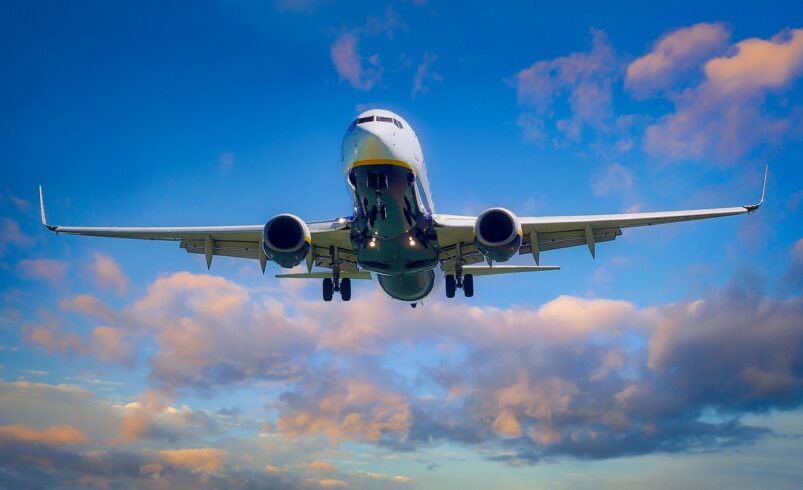When United Airlines Flight UA770 diverted unexpectedly, aviation experts and travelers alike paid attention. Diversions may sound alarming, yet they reflect strict safety systems in action. Every unplanned landing is a reminder that modern aviation is not only advanced but also designed to prioritize human life over schedules.
The United Airlines Flight UA770 Emergency Diversion provides an excellent case study in how airlines, regulators, and pilots handle complex emergencies with precision. This article explores the technical, regulatory, and operational aspects that made this incident a controlled success.
Quick Facts
✈ Airline: United Airlines
🛫 Flight Number: UA770
⚠ Event: Emergency Diversion
📍 Outcome: Safe landing without casualties
📊 Context: Example of aviation safety in practice
What Exactly Is An Emergency Diversion?
An emergency diversion occurs when a flight cannot continue as planned and must land at the nearest suitable airport. Reasons may include:
- Mechanical failures detected in flight systems.
- Medical emergencies requiring urgent attention.
- Security threats such as unruly passengers or suspicious activity.
- Severe weather conditions preventing safe travel.
For UA770, the diversion represented a quick, structured decision under aviation law.
FAA Regulations Governing Diversions
The Federal Aviation Administration (FAA) establishes rules that govern diversions. Pilots must comply with 14 CFR Part 121 for commercial operations. Key requirements include:
- Aircraft must divert if safety is compromised.
- Pilots have final authority in all decisions.
- Airlines must provide operational support and passenger care.
These laws ensure consistency across the aviation industry.
The Pilot’s Role During UA770 Diversion
In emergencies, pilots are trained to follow standard operating procedures (SOPs). For UA770, the cockpit crew would have:
- Identified the threat through onboard instruments or passenger reports.
- Consulted airline operations for diversion planning.
- Contacted Air Traffic Control (ATC) for rerouting.
- Briefed cabin crew and passengers about the situation.
Training emphasizes calm communication. Passengers reported clear instructions, proving the crew managed stress effectively.
How Air Traffic Control Supports Diversions
ATC plays a central role in diversion safety. Controllers provide:
- Priority airspace clearance.
- Real-time coordination with nearby airports.
- Emergency landing slot allocation.
For UA770, ATC ensured the flight could reroute smoothly and without conflicting traffic.
Crew Training And Crisis Management
United Airlines invests heavily in crew training. Flight attendants receive:
- Medical emergency training including CPR and AED usage.
- Cabin fire safety protocols.
- Conflict de-escalation strategies for unruly passengers.
This training enables quick action during diversions. On UA770, crew coordination minimized panic and maintained passenger safety.
Technology That Detects Emergencies Early
Modern aircraft are equipped with systems like:
- Engine monitoring sensors detecting anomalies.
- Traffic Collision Avoidance Systems (TCAS).
- Electronic flight bags assisting diversion planning.
These tools reduce human error and improve response times. UA770’s incident reinforces how technology acts as an early warning system.
Case Studies Of Similar Diversions
To understand UA770 better, comparing past incidents helps.
- Southwest Flight 1380 (2018): Engine failure led to diversion and emergency landing.
- British Airways BA286 (2019): Cabin pressurization issue required diversion.
- Delta Flight 209 (2016): Severe turbulence forced diversion.
Each event highlights that diversions are effective tools, not failures.
Statistics On Flight Diversions
Industry data underscores the rarity of diversions:
- 0.2% of U.S. flights divert annually (FAA).
- 70% of diversions involve medical events (American Journal of Emergency Medicine).
- Over 25,000 flights operate daily in U.S. skies.
UA770’s case represents a small fraction of operations, proving air travel remains extremely safe.
Airline Response After Diversion
After landing, United Airlines followed standard passenger care protocols:
- Medical evaluation for affected passengers.
- Rebooking or hotel accommodations for disrupted travelers.
- Aircraft inspection to determine mechanical reliability.
This approach balances operational efficiency with passenger rights.
Comparing Pros And Cons Of Diversions
Pros
- Ensures safety above all else.
- Provides urgent care for medical emergencies.
- Prevents escalation of technical issues.
Cons
- Causes delays and missed connections.
- Increases operational costs for airlines.
- Creates stress for passengers.
Still, the benefits clearly outweigh the disadvantages.
What UA770 Means For Aviation Safety
The UA770 diversion confirms that modern aviation is highly adaptable. Key takeaways include:
- Preparedness saves lives.
- Regulatory oversight ensures consistency.
- Technology and training minimize risks.
Airlines and regulators continue refining safety standards based on such events.
Conclusion: Safety As The True Success Story
The diversion of United Airlines Flight UA770 was not a failure—it was proof that aviation systems work exactly as designed. Pilots, crew, ATC, and airline operations collaborated seamlessly.
While passengers faced delays, they also witnessed one of aviation’s greatest strengths: an uncompromising focus on human life. UA770 should be remembered not as a disruption but as a successful case of risk management in action.
FAQs
Q1: Who Authorizes An Emergency Diversion?
The pilot in command has final authority, supported by FAA regulations and ATC coordination.
Q2: How Often Do Commercial Flights Divert?
Less than 0.2% of flights divert each year, mostly for medical reasons.
Q3: What Happens To The Aircraft After Diversion?
The plane undergoes a full safety inspection before being cleared for future flights.
Q4: Do Passengers Receive Compensation For Diversions?
Airlines often provide rebooking, accommodations, or vouchers, depending on circumstances.









